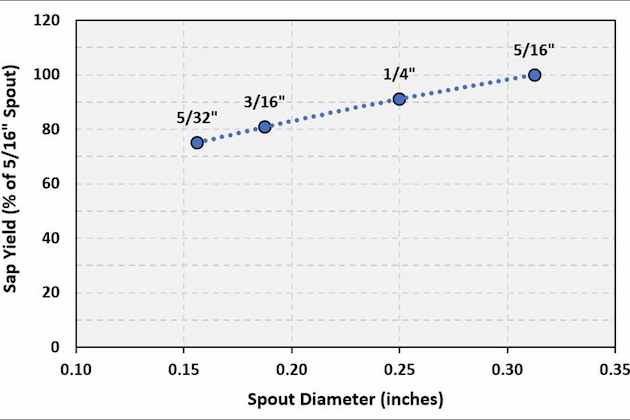UVM Proctor Page
UVM Proctor Center examines effect of spout diameter on sap yield
UVM Proctor Maple Research Center examines effect of spout diameter on sap yield
By T.D. PERKINS & A.K. VAN DEN BERG UVM PROCTOR MAPLE RESEARCH CENTER | AUGUST 29, 2019
UNDERHILL CENTER, Vt.—In order to determine the optimal approach to sap collection in their operation, maple producers need to be informed about how the choices they make will affect sap yield.
One of the decisions they face is what spout size (diameter) to use.
Average sap yields from tapholes of different diameters as a percentage of yields from 5/16”-diameter (control) tapholes.
Data are summarized from several studies conducted at the UVM Proctor Maple Research Center in Underhill, Vermont.
Average vacuum level was 25”Hg.
Under these conditions, 1/4” spouts produced ~10 percent less than 5/16” spouts.
Similar results were observed in a study by Centre Acer, which compared yields from 1/4” and 19/64” spouts at 28”Hg (Lagacé et al. 2015, Évaluation de nouveaux prototypes de chal- umeaux et de tubulures au diamètre réduit pour la collecte de la sève d’érable. http://centreacer.qc.ca/).
Although not measured in this work, spout diameter did not appear to affect the propensity of spouts to leak vacuum.
































